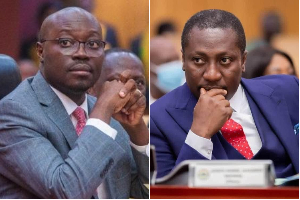The reasonableness of the prices of goods, works and services paid for by the public has in the recent past come under intense criticism, with the public concluding that such contracts do not offer value for money to the taxpayer.
It is also not uncommon for the public to attempt to determine the reasonableness of the prices of goods, works and services by a simple comparison with the prices of comparable goods, works and services procured by some other institutions, especially from the private sector.
Whereas such comparisons might not necessarily reflect the true state of the reasonableness or otherwise of such prices, at least they provide a starting point for a lay argument on the subject matter of price reasonableness analysis.
A price reasonableness analysis could be described as an exercise undertaken by a Procurement Entity (PE) which focuses on a review and evaluation of the prices offered by tenderers, with the view to ensuring that such prices are fair and reasonable to the eventual parties taking into cognisance the quality of the tenders, proposals or quotations, the Level of Effort (LoE) required to execute the assignment in question and how such offered prices compare with other prices on the market.
The difficulty in determining the reasonableness of the prices of goods, works and services has been exacerbated by the clear absence of a requirement for a price reasonableness analysis in Ghana’s public procurement Regimes.
Under some procurement regimes such as that of the Millennium Challenge Corporation (MCC), the subject matter of price reasonableness is fully integrated into every procurement process and for that matter, required to be demonstrated as part of every evaluation process before approval is granted for notification of award, negotiations (where necessary) and thereafter, the award of contract.
The position of the Public Procurement Act, 2003 (Act 663), Section 59 as amended by the Public Procurement (Amendment) Act, 2016 (Act 914) in the determination of the successful tenderer during the evaluation stage of a procurement process is to recommend the award of contract to the Lowest Responsive Evaluated Tenderer (LRET) or put another way, the Most Economically Advantageous Tender (MEAT).
Thus, the guiding principle is for a PE to award a contract to the LRET or MEAT on the basis of the recommendation of the evaluation panel, regardless of whether or not such prices quoted are reasonable.
The weakness with this provision lies in the fact that though the price of the recommended tenderer might be unreasonably high, as far as the law is concerned, the decision to award or not to award a contract rests with the PE.
With this open lacuna, an unscrupulous PE could go ahead to award a contract knowing too well that the price of the LRET is unreasonably very high, thereby creating an avenue for corrupt practices and as a consequence, not achieving value for money.
Price reasonableness analysis
The importance of conducting a price reasonableness analysis by PEs include the following:
• It is an approach to reducing the potential and incentive for corrupt practices as parties intending to act in concert for corrupt gains will be more mindful because of the requirement for price reasonableness analysis.
• It will ensure that reasonable prices are paid for goods, works and services, thereby promoting the achievement of value for money.
• It will provide a means to determine whether or not prices offered are reasonable and sufficient for the intended procurement and the consequences of this on the eventual contract.
• Promoting greater transparency and accountability in the use of public funds.
Approaches to price reasonableness analysis
There are a number of approaches used in conducting a price reasonableness analysis. These approaches could either be used independently of the other approaches or where deemed necessary, a combination of approaches could be used. These approaches include the following:
• Competitive procurement: This approach involves the comparison of prices offered by different tenderers in a competitive procurement process. The mechanism of the competition is expected to provide a useful basis for demonstrating price reasonableness. However, as discussed above, this can be unreliable in a corrupt system.
• Commodity markets: These provide published price lists for references. Prices of finished products or raw material base such as copper and aluminium could be cross-checked on the commodity market. It should be noted that such price sources might exclude the cost of shipment, insurance and handling etc.
• Historical prices: Previous prices could provide a good source of price reference. This is, however, dependent on how the previous procurement was concluded. For instance, if the previous procurement was conducted in a corrupt manner, the eventual price which formed the basis of that contract will be unreasonable and by extension, unreliable. This is why PEs who intentionally collude and inflate prices are doing themselves a great disservice as such prices could be used as a benchmark for future procurement. For the suppliers, contractors, consultants or service providers, such acts of submitting unreasonably high financial offers is disingenuous and detrimental to their course as these facts will be recorded against them.
• Budget estimates: Independent budget estimates for planned procurement could also provide a useful basis for comparison and for the determination of the reasonableness of an offered price. To get the best results, the budget estimates themselves should be reasonable and realistic.
• Price list and catalogues: This approach is particularly ideal when procuring off-the-shelf items usually through a request for quotation method. A related useful alternative for this is the price list for goods published by the Public Procurement Authority. To serve its purpose, such price lists should be updated from time to time so as to be relevant and reasonable.
It is important to point out that a price reasonableness analysis could result in prices being negotiated even in a competitive procurement process.
Price reasonableness analysis, in the opinion of the writer, is one sure way of instilling some financial discipline and ultimately providing a sound basis for the achievement of value for money in public procurement. It is, therefore, suggested that future amendments to the Public Procurement Act should consider the inclusion of a mandatory requirement of a price reasonableness as part of every evaluation.
Opinions of Thursday, 6 September 2018
Columnist: Frank Mante



















